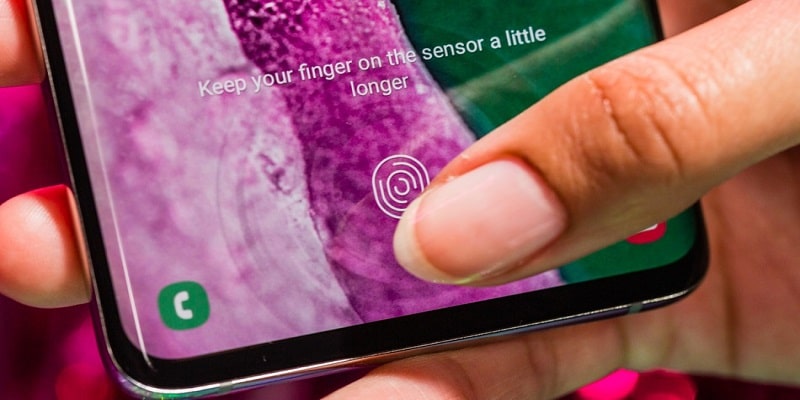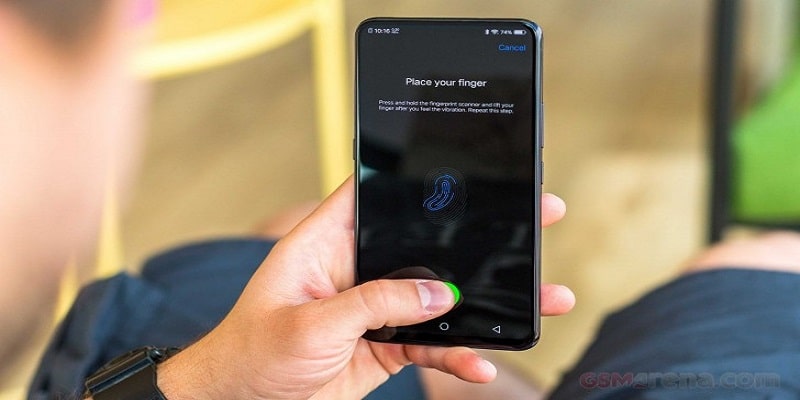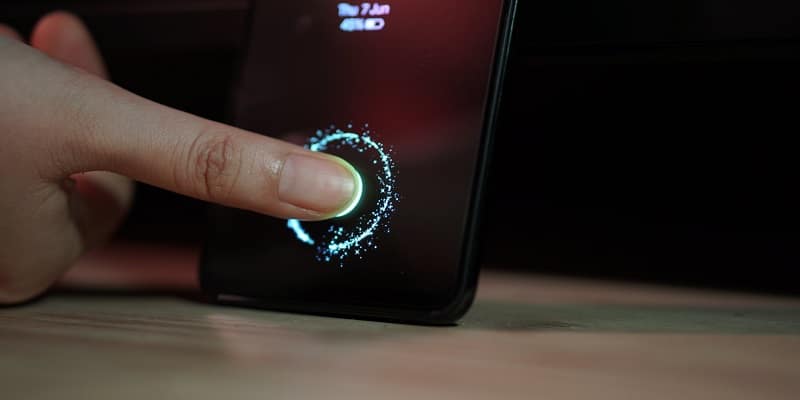Fingerprint scanning is rampant on smartphones these days as a means of protecting it.
Nowadays it is an habit for phone users to chose biometric authentication for the security of their mobile devices, since these devices are fast becoming more than our best friend.
Biometric authentication is your personal biological code, i’m talking fingerprints, voice, facial recognition and so on. We get them implemented on our devices to ensure no one is able to access them without them. Even if pin codes, passwords, and patterns are still used by some people, biometric authentication is gaining massive momentum.
Some phone manufacturers have worked and are still working on an in-display fingerprint scanner. It is a scanner within your smartphone display that will only detect your fingerprint map. The one difference is that it is not on the surface of the device. Rather, it is below. Here is how it operates.
You Might Also Want To Read- How Do I FaceTime On Android?
How Do In-Display Fingerprint Scanners Work?
There are 3 kinds of fingerprint scanners – they are optical, ultrasonic, and capacitive. Although, just the first two are used in-display. In this article, we will highlight how they work.
1. Optical Scanner
Optical sensors are the most ancient types of sensors. They work in a way that is identical to capturing an image. The sensor takes the optical photo, and with the assistance of an algorithm, recognizes the standout structure, surface, and contours. According to this saved picture, it can duplicate the object and recognize it once more.
The more apt the resolution of the scanner is, the clearer the fingerprints you will see. This kind of scanner is 2-dimensional and so simpler to deceive. Prosthetics, high-definition pictures, and other ways can trick the algorithm and allow access for a stranger to your vital information. People have stopped using this scanner though, but they are coming back due to the recent popularity of fingerprint scanners.
How Optimal In-Display Scanners Work?
An optical sensor is placed under the display of your mobile device. It makes use of optical methods for the capturing of your personal fingerprint ID. Synaptics came up with the “Clear ID” sensor, which is the first optical in-display sensor, seen in the Vivo X20 device.
This device possesses OLED panels which aids the scanners to function like they should. Anytime you put your finger on the screen, the sensor captures a picture and will unlock your smartphone. Therefore, if you put your finger on an OLED display, the light shines on your fingerprint and you will be able to capture a precise, high-resolution photo of it.
The algorithm then checks out all the light and dark part of your finger and engages in a comparison between all pictures before it reaches a conclusion to unlock your phone.
2. Ultrasonic Scanner
Ultrasonic scanner is the newest tech in fingerprint scanning. Like the name hints, it makes use of an ultrasonic transmitter and an ultrasonic receiver to create scans that cannot be replicated. Anytime you place your finger on this scanner, an ultrasonic pulse will transmit against it. Some of it will bounce back to the sensor, but the remaining part will stay in your pores, lines, and other unique features of your fingerprint.
Because this gives you a 3D picture of your fingerprint, it is the safest of the 3 methods.
You Might Also Want To Read- How Do I Download Torrents Straight To My IPhone?
How Ultrasonic In-Display Scanners Work?
Ultrasonic scanners are not the finished project yet and its usage began recently. Samsung Galaxy S10 and Galaxy S10 Plus possess ultrasonic in-display fingerprint sensors. They are not flawless because there are lots of things that can make it malfunction.
Because the scanner can be found under the display, ultrasonic waves have to pass through several layers. They need to go via the backplane of the screen, then via glass, and after all that, your screen protection before they get to your finger at last.
This is why it works well only when the display is thin, and when there is no protection. With enhancements in the future, ultrasonic scanners might take over. They are very dependable as per security.
3. Capacitive Scanners
They are seen as the most safe and popular among phone owners. Unlike the first 2 options, this scanner is not in-display. They need a direct touch of your finger, without no interference like glass in between. They utilize a “capacitor” for scanning fingerprint data. When a finger is placed on the scanner, it will change and monitor your fingerprint map.
If your device has the right number of capacitors, the end result of your scan will be difficult to deceive. This is why it is seen by some as the most secure. Latest smartphone models use capacitive scanners. They can be found in the home button of an iPhone, or at the back of some devices.



